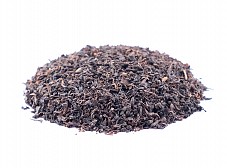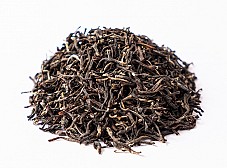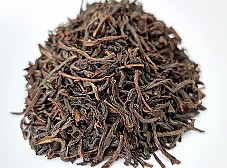
Ceylon Black Tea
The smell of spices, exotic fruits, picturesque tea plantations, high mountains and the blue ocean. All this comes to mind when we say Ceylon tea. And also the rich history associated with the British colonial era, during which Sri Lanka became one of the leading producers and exporters of tea. Today, Sri Lanka's annual tea production is 300-350 thousand tonnes, roughly six percent of the world's production.
More...To this day, Ceylon is synonymous with quality black tea, almost exclusively hand-picked and processed using traditional methods introduced by the British colonialists. They first tried to grow mainly coffee and cocoa in Sri Lanka. However, the plantations were destroyed by the Hemileia vastatrix rust in the mid-19th century. However, the affected growers quickly found a replacement for the destroyed coffee bushes in the form of tea trees. The environment and climate provided very good conditions for its cultivation and within a few years the tea tree had spread and completely replaced the coffee tree. Since then, the prestige and fame of quality Ceylon tea has spread around the world.
Sri Lankan teas are grown on plantations in the central mountainous part of the island and towards the south. These are several important growing regions. Each of these regions has its own specific character, microclimate, altitude and soil conditions, which create the distinctive characteristics of Ceylon loose-leaf tea. This diversity makes Ceylon teas very varied with a wide range of flavours, aromas and shades. One of the main criteria is the altitude at which the tea bushes grow. Here, more than in other growing regions, the higher the better. Ceylon's high-altitude teas are always valued more than those from the lowlands.
The most famous growing areas for Ceylon tea are:
Nuwara Eliya
one of the most famous and highest growing areas of Sri Lanka. It is the central region of the island where tea trees are grown at an altitude of 1800-2100 meters. Due to the high altitude, the weather is cooler with high rainfall for most of the year. Cooler temperatures, frequent fogs affect the growth of the tea leaves and contribute to a more complex, intricate and delicate flavour spectrum of tea.
Dimbula
South of Nuwara Eliya in the middle and higher elevations is the equally famous Dimbula area. This area is located in the central part and is part of the mountain range known as the 'Kandy-Matale-Nuwara Eliya Mountain Range'. Tea trees are grown here at an altitude of 1200-1900 metres. The mild climate, adequate rainfall and frequent fogs mostly in the morning are ideal conditions for the thriving growth of tea trees and quality tea production. Ceylon teas from the Dimbula region typically have a full, round, fruity flavour with spicy or floral notes.
Uva
East of the central mountains, at an altitude of approximately 1000-1700 metres, is another equally well-known growing area, Uva. The climate in the Uva area is characterised as subtropical to tropical, with significant rainy seasons. The monsoon rainfall, which occurs from May to June and from October to December, is a key factor for the thriving growth of the tea plant. Tea harvesting in the Uva region takes place throughout the year, but the peak season is from June to September. Uva black tea is known for its strong and rich flavour with slightly spicy, floral and fruity notes.
Kandy
also in the central part of the island with a cool, tropical climate, often influenced by monsoon winds, at an altitude of 600-1700 metres. The rainfall is evenly distributed throughout the year, making it ideal for tea growing. The area has one of the longest traditions of tea cultivation dating back to the second half of the 19th century.
Sabaragamuwa
a relatively large area in the central and southern part of the island. Tea trees are grown here in the lower and middle elevations at an altitude of 600-1200 metres. It is an area with a warm tropical climate with regular monsoons from May to August and from October to December. The clay soil of this area allows good drainage and gives plenty of nutrients to the tea bushes. The teas from this area are full-bodied, full-bodied, often with spicy and fruity notes.
Ruhuna
a vast area in the very south of the island with plantations up to a maximum height of 600 metres. The warm tropical climate with high humidity and ample rainfall allows for the cultivation and production of bold, strong to robust black teas.


